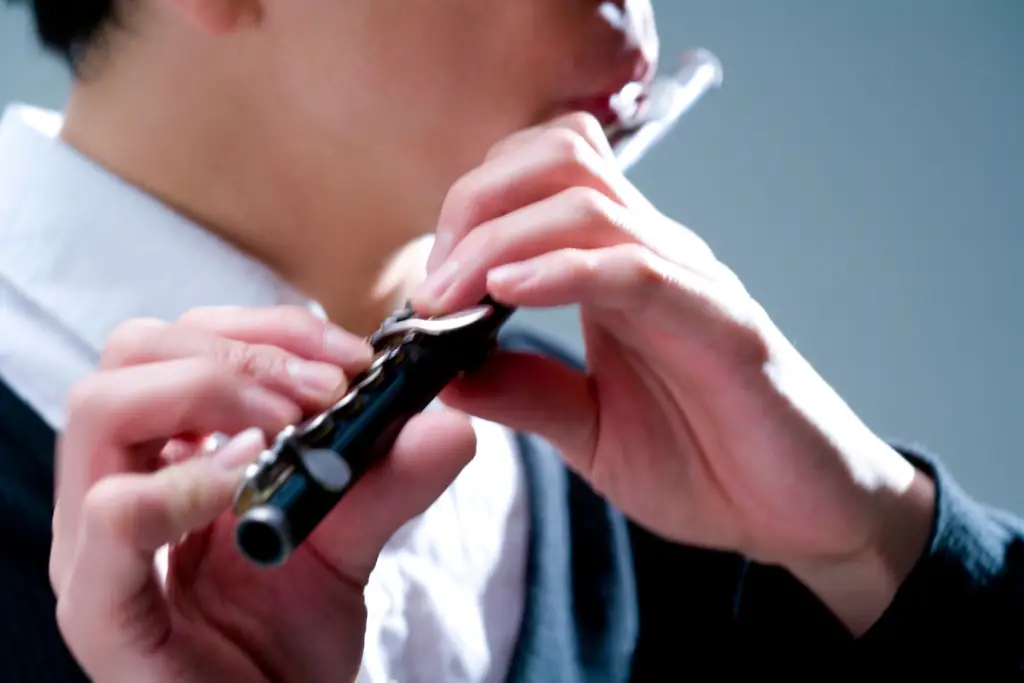Learning to play the piccolo can be an exciting journey for any aspiring musician. This small but powerful instrument requires proper technique to produce its signature high-pitched sound. Many beginners struggle with how to blow into a piccolo effectively.
To blow into a piccolo, form a small opening with your lips and direct a focused stream of air across the embouchure hole at a downward angle. This technique, known as the embouchure, is crucial for producing clear notes on the piccolo. It’s important to keep the embouchure looser and more open than one might expect, as the piccolo relies more on air pressure than lip tension to create sound.
Proper breath control is essential when playing the piccolo. While the instrument is smaller than a standard flute, it still requires good breath support to maintain pitch and tone quality. Players should take deep, controlled breaths and use their diaphragm to regulate airflow. With practice, musicians can master the art of blowing into a piccolo and unlock its full musical potential.
Understanding the Piccolo
The piccolo is a small, high-pitched woodwind instrument that requires precise technique and control. Mastering this instrument involves understanding its unique anatomy and the crucial role of breath control in producing clear, resonant tones.
Anatomy of a Piccolo
The piccolo consists of three main parts: the headjoint, body, and footjoint. The headjoint contains the embouchure hole, where the player blows across to create sound. Unlike the flute, most piccolos are made of wood, typically grenadilla or rosewood, though some are metal.
The body houses the key mechanism, which is similar to that of a flute but scaled down. It features a series of tone holes and keys that allow the player to change pitch. The footjoint, while shorter than a flute’s, contains additional keys for the lowest notes.
Piccolos are typically pitched in C, sounding an octave higher than written. This high pitch contributes to the instrument’s bright, penetrating tone that can cut through an entire orchestra.
The Role of Breath in Piccolo Playing
Breath control is paramount in piccolo playing. The instrument requires a focused, fast airstream directed across the embouchure hole to produce sound. Players must learn to adjust their air speed and direction for different registers.
For lower notes, a slower, warmer airstream is needed. As the player ascends to higher notes, the air speed must increase, and the airstream should be directed more upward. This adjustment helps maintain pitch accuracy and tone quality across the instrument’s range.
Proper breath support involves engaging the diaphragm and abdominal muscles to control the air column. This support is crucial for maintaining a steady tone, especially in the piccolo’s challenging high register.
Fundamentals of Blowing Techniques
Mastering piccolo blowing techniques requires proper embouchure formation and effective air support. These elements work together to produce a clear, resonant tone across the instrument’s range.
Embouchure Formation
The piccolo embouchure differs slightly from that of a flute. Players should form a small, focused aperture with their lips, directing the airstream across the embouchure hole. The lower lip should cover about one-third of the hole, with the upper lip positioned to create a downward angle for the air.
Piccolo players must develop flexibility in their embouchure to accommodate the instrument’s high register. Adjusting the angle and size of the aperture helps control pitch and tone quality.
Practice exercises focusing on long tones and octave slurs can help refine embouchure control. Players should aim for a relaxed, yet firm lip position to maintain endurance during extended playing sessions.
Air Support and Control
Proper air support is crucial for producing a full, centered tone on the piccolo. Players must use their diaphragm to generate a steady, controlled airstream.
Breath control exercises can improve air support:
- Sustained notes with varying dynamics
- Slow scales focusing on consistent tone quality
- Flexibility exercises to practice moving between registers
Piccolo players need to develop precise control over their air speed and volume. Faster air is necessary for higher notes, while lower notes require a slower, more relaxed airstream.
Experimenting with different air speeds and volumes helps players find the optimal balance for each register. Regular practice of breathing fundamentals ensures consistent tone production across the piccolo’s range.
Practical Exercises to Improve Blowing
Mastering piccolo embouchure requires consistent practice and targeted exercises. Focus on developing breath control, sustaining notes, and refining articulation to enhance your blowing technique.
Long Tones and Breath Control
Begin with long tone exercises to improve breath support and tone quality. Start by playing a comfortable middle-range note for 8-12 seconds, maintaining steady pitch and volume. Gradually increase the duration as your control improves.
Practice the lip flexibility exercise of moving the bottom lip forward to play higher notes and back for lower notes. This helps develop the ability to change octaves smoothly.
Incorporate breath-building exercises into your routine. Try inhaling for 4 counts, holding for 4, and exhaling for 8, gradually increasing the counts as lung capacity improves.
Articulation and Dynamics
To refine articulation, practice tonguing exercises using various syllables like “tu” or “du” for single tonguing and “tu-ku” for double tonguing. Start slowly and increase speed as control improves.
Work on dynamic control by playing scales with crescendos and diminuendos. Begin at pianissimo and gradually increase to fortissimo, then reverse the process.
Experiment with different articulation patterns:
- Slurred notes
- Staccato notes
- Legato tonguing
Combine articulation and dynamics in short musical phrases to develop control over both aspects simultaneously. This integration helps create more expressive and nuanced piccolo playing.

